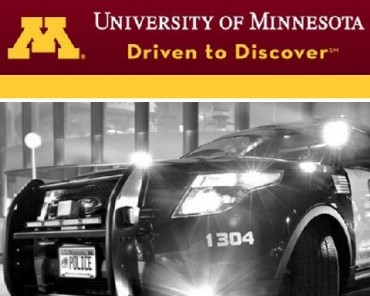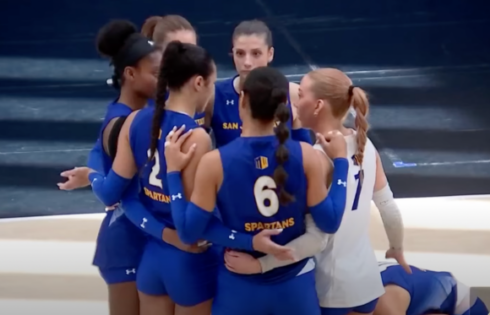
ANALYSIS: Pledge that racial descriptors would be curbed does not materialize
A pledge by University of Minnesota campus leaders to reduce the use of suspects’ racial descriptions in campus crime alerts has not materialized, as at least four of five alerts sent out since the policy was put in place have included the suspects’ race.
In fact, the first two alerts sent after the Feb. 25 decision were of “white male” suspects, and in the last few weeks officers described “black male” suspects as well.
At first glance, this appears to contradict the announcement by President Eric Kaler that the university would curb revealing suspects’ race in campus crime alerts so as to not “unintentionally reinforce racist stereotypes of black men, and other people of color, as criminals and threats.”
Under the new policy, campus police may only include a suspect description if it includes specific descriptors as opposed to generalizations, such as the suspect’s estimated height, weight, build, clothes, and details about the weapon used, as well as his or her race.
Officials claimed it was different than their previous method, which was to provide limited descriptions of suspects.
“This new approach advances public safety while recognizing the harm caused by using  race in otherwise limited suspect descriptions,” Kaler (pictured) had stated.
race in otherwise limited suspect descriptions,” Kaler (pictured) had stated.
When announced, the decision made national headlines and was met with opposition and criticism by some who suggested it kowtowed to political correctness and a small but vocal group of students who claimed the university fostered racism and racially profiled.
Yet all the controversy may have been unnecessary.
Not only because campus police have continued to use detailed racial descriptors in crime alerts when they have them available, but also because crime alerts prior to the new policy also included such details.
Kaler’s announcement: Rhetorical pandering?
A review by The College Fix of many of the crime alerts prior to Feb. 25 show police rarely if ever simply stated the suspect was a “black male” or “white male.” For the most part, law enforcement provided approximate height, build, clothing descriptions and other details in alerts prior to the new policy.
In effect, it’s unclear if Kaler’s announcement was anything more than rhetorical pandering to students claiming they felt marginalized.
In fact, the protesting University of Minnesota students predicted as much.
According to a blog post from Feb. 25, the day of President Kaler’s announcement, “Whose Diversity?” – the name of the group of student activists leading the charge – stated “these changes are merely bread crumbs meant to pacify dissent and halt further actions toward justice. The administration wishes to end the conversation here.”
Protestors argue the use of any racial descriptors whatsoever reinforces racial prejudice and encourages negative stereotypes, according to their blog.
“It’s still putting black students and other students of color at risk of being racially profiled,” Leah Prudent, a senior global studies major, told the Star Tribune about the new policy.
Others see it differently.
Steven Henneberry, University of Minnesota’s spokesman, told The College Fix that the “The U of M’s chief of police and university services leadership will decide whether to include descriptions in crime alerts on a case-by-case basis.”
Homicide, sexual assault, robbery, aggravated assault, burglary and arson are the types of crimes that prompt a campus crime alert.
‘It’s been proven to be nonsense in test case No. 1’
On Mar. 23, a student was raped off campus while scraping snow off her car. Campus police noted in the first alert since the policy’s enactment that “the suspect is a white male, five feet ten inches to six feet one inch tall with a medium build. The suspect was wearing a black hooded sweatshirt and black sweatpants with three white stripes on the side.”
This brought the chiding of a local columnist, who noted the policy was “bound to backfire.”
“Kaler, who said he was moved by the personal stories of, apparently, a feeling of stigmatization brought about by racial descriptions in crime reports, bought this ridiculous contention and acquiesced for the larger calling of making the university more welcoming to students of color,” Twin Cities columnist Joe Soucheray wrote. “OK. But it was bound to backfire, and it already has.”
“Does anybody really think that the woman who was attacked does not wish for the public to have an accurate description of who they are looking for? And in the horror of an attack, is a woman, or a man, supposed to pause and take note of distinguishing characteristics? … No, kids, and Kaler, your policy isn’t even well-intentioned. It’s been proven to be nonsense in test case No. 1, right out of the gate.”
The university continued to offer race in its subsequent alerts.
On Apr. 20, a student was groped while walking on campus. Again police reported the suspect was a “white male, approximately 20 to 30 years old, five feet ten inches tall with a medium build. The suspect was wearing a navy blue baseball cap, blue tee shirt, khaki shorts and dark flip flop sandals.”
On May 14, two students were robbed off campus. Campus police noted the suspect was “a black male with a dark complexion, 20 to 23 years old, five feet nine inches to six feet tall, with a medium build. The suspect had shoulder length hair in cornrows or dreadlocks, and was wearing dark jeans, a grey zip-up sweatshirt, and black gloves.”
On May 26, a female student was robbed on campus by knifepoint. Police reported the suspect was “a black male with a dark complexion, 20 to 25 years old, with brown hair and brown eyes. The suspect is six feet to six feet three inches tall with a thin build, and was wearing a dark green t-shirt and shorts.”
The only alert without a description was an April 15 one of an off-campus robbery that noted that “detailed suspect descriptions are not available at this time.” Another crime alert of an alleged rape in the dorms was rescinded after it was determined to be a hoax.
But the four descriptions given after the new policy mirrored ones given prior to its enactment in terms of suspect detail descriptions of both white and male suspects.
For example, a crime alert from April 28, 2014, noted the suspect was “a black male, approximately six feet, two inches tall with a muscular build. The suspect was wearing a dark hoodie that was pulled low over his face, and dark jeans.” Crime alerts prior to the new policy were similar – offering plenty of detailed suspect descriptions.
‘Whose Diversity?’ shows no signs of appeasement
The new “policy” came about after a Feb. 9 “Whose Diversity?” sit-in demonstration in Kaler’s office.
The group came with a list of demands, later published with responses from university administration. Some of the demands included: one gender-neutral bathroom in every building on campus, increased financial support for Latino students, the removal of criminal history from the admissions application, and the removal of racial descriptors from campus crime reports.
The protest prompted President Kaler’s “new policy.” It does not appear to have appeased protestors. The group shows no signs of slowing down, collaborating with Black Lives Matter, organizing a variety of protests in the Twin Cities metro area, including a shut down of the Mall of America and an attempted takeover of Interstate 94.
Leaders and student members of “Whose Diversity?” ignored requests for comment by The College Fix.
College Fix reporter Anthony Gockowski is a student at the University of St. Thomas.
Like The College Fix on Facebook / Follow us on Twitter
Like The College Fix on Facebook / Follow us on Twitter






Please join the conversation about our stories on Facebook, Twitter, Instagram, Reddit, MeWe, Rumble, Gab, Minds and Gettr.